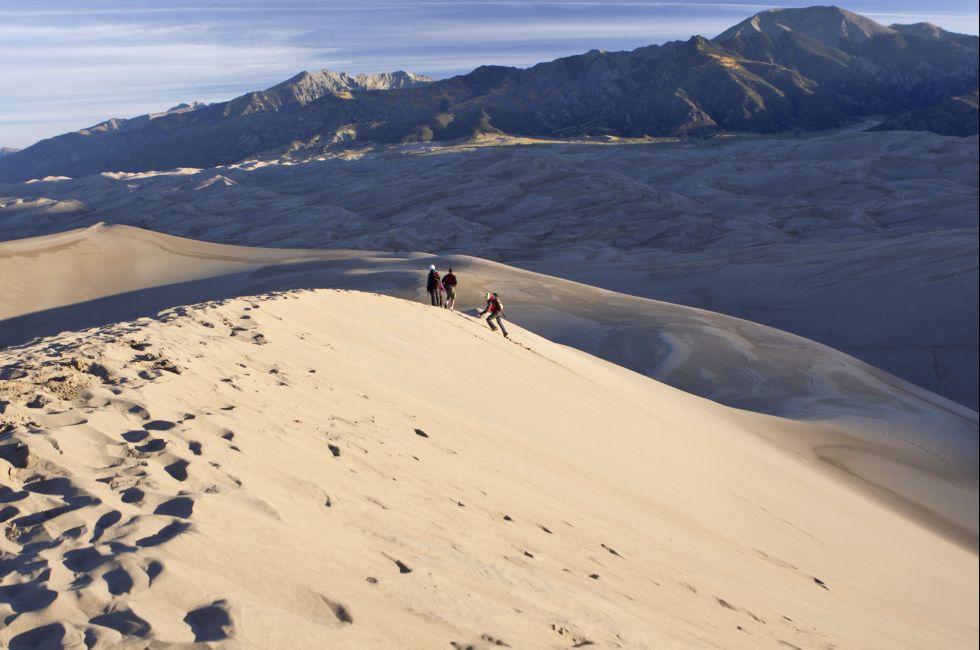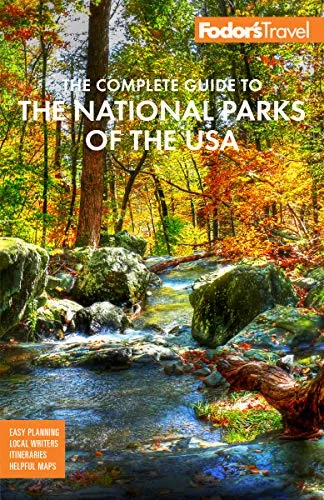Great Sand Dunes National Park
Great Sand Dunes National Park
Created by winds that sweep the San Luis Valley floor, the enormous sand dunes that form the heart of Great Sand Dunes National Park and Preserve are an improbable, unforgettable sight. The dunes stretch for more than 30 square miles, solid enough to have withstood 440,000 years of Mother Nature.
Nomadic hunters followed herds of mammoths and prehistoric bison into the San Luis Valley, making them some of the first people to visit the dunes. The hills of sand marked a common route for Native American tribes and explorers who traveled between the plains and Santa Fe. Speculation that gold was hiding under the sand attracted droves of miners in the 19th and 20th centuries. By the 1920s, operations had sprung up along the seasonal Medano Creek at the eastern base of the dunes, alarm...
Read MoreCreated by winds that sweep the San Luis Valley floor, the enormous sand dunes that form the heart of Great Sand Dunes National Park and Preserve are an improbable, unforgettable sight. The dunes stretch for more than 30 square miles, solid enough to have withstood 440,000 years of Mother Nature.
Nomadic hunters followed herds of mammoths and prehistoric bison into the San Luis Valley, making them some of the first people to visit the dunes. The hills of sand marked a common route for Native American tribes and explorers who traveled between the plains and Santa Fe. Speculation that gold was hiding under the sand attracted droves of miners in the 19th and 20th centuries. By the 1920s, operations had sprung up along the seasonal Medano Creek at the eastern base of the dunes, alarming residents of the nearby Alamosa and Monte Vista communities. Members of the Ladies Philanthropic Educational Organization lobbied politicians to protect the landmark, and in 1932 it was designated a national monument. Seventy years later, it was discovered that a large inland lake once covered the San Luis Valley, but had dried up due to climate change. Residents again rallied to protect the local resource, wildlife and unique ecosystems, and the area was expanded into a national park and preserve in 2004. Today, more than half a million visitors flock to the region annually to gawk at and play on the vast mountains of sand framed by the low grasslands and high-reaching Sangre de Cristo peaks. The tallest sand dunes in North America are nestled among diverse ecosystems of wetlands, grasslands, forests, and a towering mountain range where visitors can fish alpine lakes, walk among wildflowers, listen to songbirds, and climb the soft sand in a single day. Pronghorn, elk, and bighorn sheep call the area home, while sandhill cranes flood the area twice a year during spring and fall migrations. From star designs to sharp defined edges, the shapes of the dunes are as disparate as the geography surrounding them. Warmed by the sun or coated in snow, the sand hills, which tower as high as 750 feet, offer opportunities for sledding or climbing year-round. Adding to the awe of the unusual landscape, avalanches of sand can create a rare humming sound that inspired Bing Crosby’s musical hit “The Singing Sands of Alamosa.” Intrigue and inspiration continues to attract visitors from around the globe to this one-of-a-kind site.








